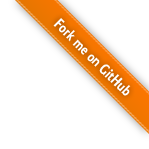FAQ
How should I cite Smile?
Please cite Smile in your publications if it helps your research. Here is an example BibTeX entry:
@misc{Li2014Smile,
title={Smile},
author={Haifeng Li},
year={2014},
howpublished={\url{https://haifengl.github.io}},
}
Link with Smile
Smile artifacts are hosted in Sonatype Nexus. You can add the following dependency into your pom.xml:
<dependency>
<groupId>com.github.haifengl</groupId>
<artifactId>smile-core</artifactId>
<version>5.0.2</version>
</dependency>
implementation("com.github.haifengl:smile-core:5.0.2")
libraryDependencies += "com.github.haifengl" % "smile-core" % "5.0.2"
To leverage GPU and deep learning, add
<dependency>
<groupId>com.github.haifengl</groupId>
<artifactId>smile-deep</artifactId>
<version>5.0.2</version>
</dependency>
implementation("com.github.haifengl:smile-deep:5.0.2")
libraryDependencies += "com.github.haifengl" %% "smile-deep" % "5.0.2"
For Scala API, add
libraryDependencies += "com.github.haifengl" %% "smile-scala" % "5.0.2"
Some algorithms rely on BLAS and LAPACK (e.g. manifold learning, some clustering algorithms, Gaussian Process regression, MLP, etc.). By default, Smile includes OpenBLAS for macOS, Windows, and Linux:
libraryDependencies ++= Seq(
"org.bytedeco" % "javacpp" % "1.5.11" classifier "macosx-arm64" classifier "macosx-x86_64" classifier "windows-x86_64" classifier "linux-x86_64",
"org.bytedeco" % "openblas" % "0.3.28-1.5.11" classifier "macosx-arm64" classifier "macosx-x86_64" classifier "windows-x86_64" classifier "linux-x86_64",
"org.bytedeco" % "arpack-ng" % "3.9.1-1.5.11" classifier "macosx-x86_64" classifier "windows-x86_64" classifier "linux-x86_64" classifier ""
)
For mobile platform, you may need add classifier "android-arm64"
or classifier "ios-arm64". In general, you should include only
the needed platforms to save spaces.
If you prefer other BLAS implementations, you can use any library found on the "java.library.path" or on the class path, by specifying it with the "org.bytedeco.openblas.load" system property. For example, to use the BLAS library from the Accelerate framework on Mac OS X, we can pass options such as `-Djava.library.path=/usr/lib/ -Dorg.bytedeco.openblas.load=blas`.
For a default installation of MKL that would be `-Dorg.bytedeco.openblas.load=mkl_rt`. Or you may add the following dependencies to your project, which includes MKL binaries. Smile will automatically switch to MKL.
<dependency>
<groupId>org.bytedeco</groupId>
<artifactId>mkl-platform</artifactId>
<version>2024.0-1.5.10</version>
</dependency>
<dependency>
<groupId>org.bytedeco</groupId>
<artifactId>mkl-platform-redist</artifactId>
<version>2024.0-1.5.10</version>
</dependency>
implementation("org.bytedeco:mkl-platform:2024.0-1.5.10")
implementation("org.bytedeco:mkl-platform-redist:2024.0-1.5.10")
libraryDependencies ++= {
val version = "2024.0-1.5.10"
Seq(
"org.bytedeco" % "mkl-platform" % version,
"org.bytedeco" % "mkl-platform-redist" % version
)
}
Model serialization
To serialize a model, you may use
import smile._
write(model, file)
import smile.io.Write;
Write.object(model, file)
This method serializes the model in Java serialization format. This is handy if you want to use a model in Spark.
Data Format
Most Smile algorithms take simple double[] or DataFrameas input.
DataFrame can be easily constructed from double[][] too.
So you can use your favorite methods
or library to import the data as long as the samples are in double arrays. Meanwhile, Smile provides
a couple of parsers in smile.io for popular data formats, such as CSV, Weka's ARFF files,
LibSVM's file format, delimited text files, SAS, Parquet, Avro, Arrow, JSON, and binary sparse data.
Cannot build Smile with maven
We have moved to SBT to build packages. The maven pom.xml files were deprecated and were removed in v1.2.0.
Headless Plot
In case that your environment does not have a display, or you need to generate and save a lot of plots without showing them on the screen, you may run Smile in headless model.
bin/smile -Djava.awt.headless=true
bin/jshell.sh -R-Djava.awt.headless=true
The following example shows how to save a plot in the headless mode.
val toy = read.csv("data/classification/toy200.txt", delimiter="\t", header=false)
val canvas = plot(toy, "V2", "V3", "V1", '.')
val image = canvas.toBufferedImage(400, 400)
javax.imageio.ImageIO.write(image, "png", new java.io.File("headless.png"))
import java.awt.Color;
import smile.io.*;
import smile.plot.swing.*;
import org.apache.commons.csv.CSVFormat;
var toy = Read.csv("data/classification/toy200.txt", CSVFormat.DEFAULT.withDelimiter('\t'));
var canvas = ScatterPlot.of(toy, "V2", "V3", "V1", '.').canvas();
var image = canvas.toBufferedImage(400, 400);
javax.imageio.ImageIO.write(image, "png", new java.io.File("headless.png"));
How can I set the random number generator seed for random forest?
This is a common question for stochastic algorithms like random forest.
In general, this is discouraged because people often choose bad seed due to the lack
of sufficient knowledge of random number generation. However, one may want the repeatable
result for testing purpose. In this case, call smile.math.MathEx.setSeed before
training the model.
Note that we don't provide a method to set the seed for a particular algorithm. Many algorithms are multithreaded and each thread has their own random number generator. We choose this design because each random number generator maintains an internal state so that it is not multithread-safe. If multithreads share a random number generator, we have to use locks, which significant reduce the performance.
A method setSeed() in the algorithm is also troublesome.
For algorithms like random forest, it is not right to initialize every thread
with the same seed. Otherwise, same decision trees will be created,
and we lose the randomness of "random" forest. It is also complicated
to pass a sequence of random numbers because it is not clear
how many random number generators are needed for many algorithms. Even worse, it breaks
the encapsulation as the caller has to know the details of algorithms.

